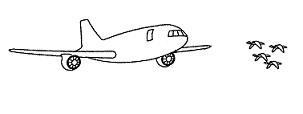Bird Strike Committee Proceedings

Bird Strike Committee-USA/Canada Joint Annual Meeting: 2nd (2000)
Date of this Version
August 2000
Document Type
Article
Abstract
The United States Air Force (USAF) Bird Aircraft Strike Hazard (BASH) Team has been developing versions of a Bird Avoidance Model (BAM) since the early 1980’s. In the developmental phases of the first models, it was recognized that avoiding birds on low-level routes and ranges was the only solution to the significant problem of bird strikes to these military operations nationwide. The early versions of BAM were limited in coverage, biological data, and resolution. With the advent of sophisticated Geographic Information System (GIS) technology and advances in computational capability, modern versions of the USAF BAM have become increasingly robust and user friendly. The current version of BAM, released to the USAF in 1999, incorporates data layers from many sources to display risk surfaces at 1km resolution for the entire continental United States for each two-week period of the year and four daily time periods. Data on over 60 bird species considered most hazardous to flight operations, hundreds of environmental variables, infrastructure, and aeronautical charts are incorporated into the model. The user interface is a menu-driven package that allows pilots and schedulers to assess hazards on chosen routes with minimal effort in minutes. More sophisticated analyses are possible for other user groups. Preliminary reports from the user community have indicated savings of several million dollars in USAF aircraft assets in the first year of operation. Demand from the military community outside the continental US and the civil aviation community indicates a necessity for expansion of the BAM to other areas of the world and for continued refinement of data layers. International cooperation in the development of models will be necessary to ensure more global coverage and compatibility of systems between cooperating nations. The USAF has demonstrated its willingness to share its technology and experience to ensure such interoperability between cooperating agencies and nations.

